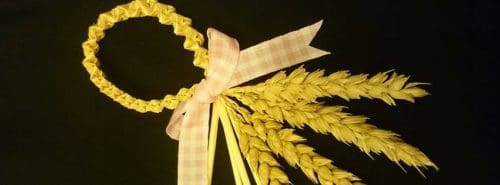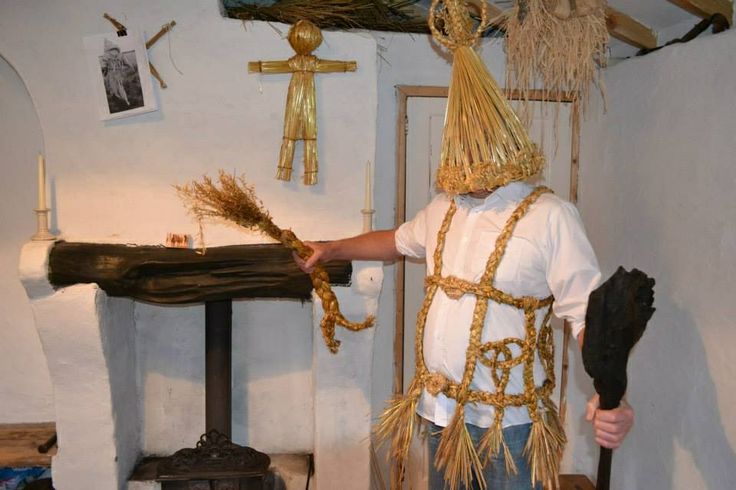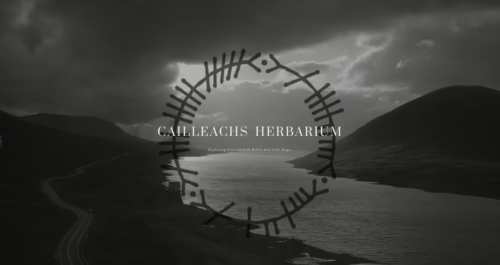It’s nearing that time of year again. The wheat, rye and barley are almost ripe and the Raspberries and Bilberries are coming out in force. Poppies dot red the yellowing seas of grain. It’s nearing Lunastal and folks are readying to take in the harvest from the fields. This was a time of celebration, coupling up before the hard work starts and the construction of Corn dolls, straw craft and wheat weaving.
One way that folks used to show their affections for one another was with wheat weaving or with barley or rye weaving. Basically straw craft – known as a country man’s favour. In days gone by it was the custom for a country lad to take an evening walk with his lass in the fields at harvest time. He would weave for her a buttonhole of plaited straw, and if they were courting, she would wear it over her heart as a token of her love. At the annual hiring fairs at Martinmas (11th November, in effect the quarter day of Samhuinn), men and women might have worn a simple plait decorated with a wisp of sheep’s wool or horse hair, as a badge of their trade, ie shepherd, waggoner, etc.
Others would prepare the wheat for costumes for guising Samhuinn. known also as Skelling. However, traditionally the spirit of the field would be captured with a “corn dolly”.
Despite their name (corn evolved from ‘kern,’ the old English word for grain, and “dolly” is thought to have evolved from “idol”), corn dollies weren’t made of corn and didn’t always resemble the human form. More often, they were interpreted as circles, hearts, loops, goats, and stars that could be displayed in the home during the dormant winter, then ploughed back into the earth in spring. When modern mechanical threshers came into use, the art of making corn dollies was almost lost (Keighley, 1975).
Crying the neck, or cutting the last sheaf of corn was part of a little ritual in some parts of the UK. It was believed that the “Spirit of the Harvest” lived in the grain and would move ahead of the reapers as they worked, eventually coming to rest in the last grain to be cut. In Europe this would have been the Corn-mother, in Scotland, we call this spirit the Cailleach. This is a great example of the animistic nature of the Cailleach, many things that were the “last” were also known as the Caileach too, Such as Callieach Fraoch etc, I digress. They gathered in the Cailleach, the last sheaf and wove it into one of a variety of traditional forms. The last person to reap their wheat over the winter would have to keep the Cailleach in their house. In Scotland, no one wanted this responsibility and this caused many arguments, the corn dolly would be moved from field to field as they were reaped in turn (McNeil, 1952). You can read more about this in the Lunastal posts.
Corn Dolls or wheat weaving is a dying art. These corn dollies aren’t like the ones found in America made of actual corn husks. They are made of sometimes simple, other times intricate, weaving of the stems of thin straw (wheat) plants. Corn doll traditions are still in existence and you mostly find them in Wales and Cornwall, where you’ll see huge varieties of them for sale and displayed in many houses. These aren’t made according to the last wheat sheaf cut they are made any time of year and for decoration or perhaps apotropaic purposes.
We’re really lucky to be at the castle this year. The fields around us are full to bursting with Wheat, Rye and Barley, (though not of the longer stemmed variety) and we will get the chance to make our own this year. I have included some video links below to show how simple this is. One uses Reeds but both are really simple to start with.
The reed Weaving video:
A simple Country favour (she refers to it as a love knot):
If this is something you’re interested in there are plenty of great videos and other resources at this website http://www.strawcraftsmen.co.uk and more information of Scottish Courses and works here http://www.somethingcorny.co.uk.
References:
Keighly, D. (1975) Corn Dollies: Their Story, Traditions and How to Make Them.
McNeail, M. (1952) The silver bough.





